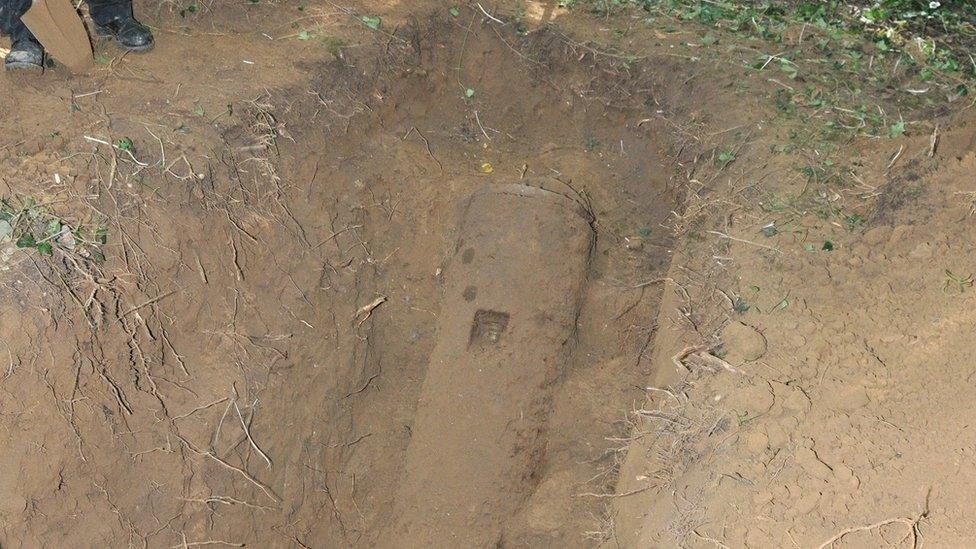Only Nazi concentration camp on British soil may be protected
- Published

A small plaque, erected on a gatepost in 2008, is the only memorial to what happened on the site
The site of the only Nazi concentration camp on British soil could be protected from development.
Lager Sylt was one of four camps in Alderney, which was occupied by German forces during World War Two.
Only sentry posts, foundations, a small tunnel and three gateposts remain of the site to the south west of the island's airport.
Alderney's government is considering protecting the site by making it a conservation area.
The Germans built hundreds of structures in Alderney, but currently only two of them are on the register of historic buildings: the two fire direction towers, known as the Odeon and the water tower.
If approved at the Alderney States meeting on 18 March the land will be added to the register of historic buildings due to it being "an area of special historic or archaeological interest".
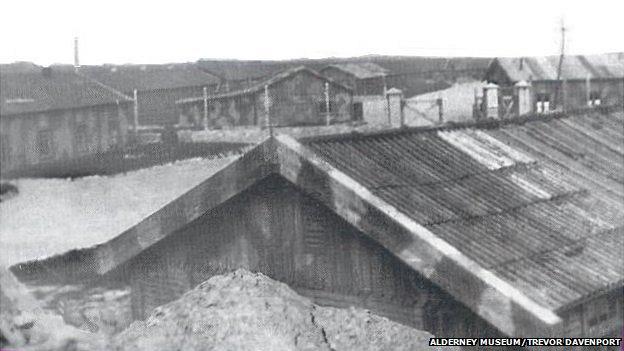
Nearly 1,000 prisoners were held in the camp while it was under SS control
Alderney, along with the other Channel Islands, was demilitarised in 1940 and was occupied by German forces as part of the Nazi expansion into Western Europe.
The Channel Islands, loyal to Britain but lying off the coast of France, were heavily fortified as part of Hitler's Atlantic Wall.
While on the other islands German troops lived alongside residents, Alderney's fate was different.
Nearly all of the island's population had been evacuated to England before the arrival of the first German troops in late June 1940.
Four labour camps were established - named after the German islands Borkum, Helgoland, Norderney and Sylt - to house the workers who would build the fortifications on the island under Organisation Todt and the last of these was later taken over by the SS.
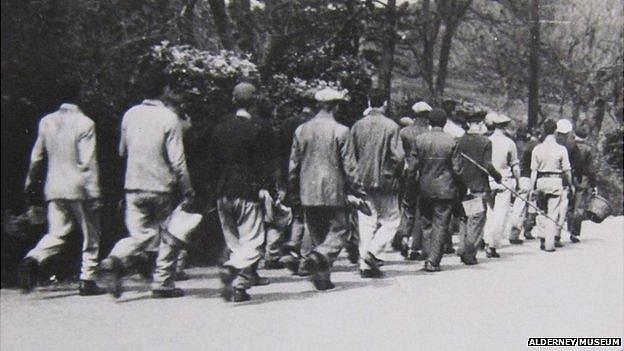
Four labour camps were built in Alderney with those interned forced to build the Atlantic Wall defences
It is not clear how many people were killed in Lager Sylt, but historian Colin Partridge said the records show at least 87 prisoners died.
He said 950 prisoners, along with 70 guards and six Alsatian dogs, were moved from mainland Europe to the camp in March 1943.
Mr Partridge said: "[They were] brutally treated by the SS. There were deaths from hanging for very minor misdemeanours; shot on the slightest pretext.
"For instance, a number of sick workers were herded out through a hole in the perimeter wire and shot on the other side for attempting to escape."

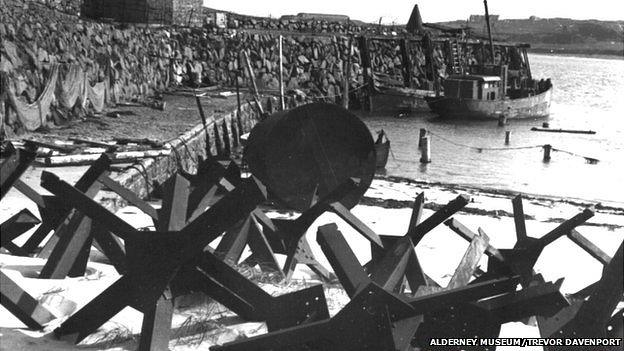
Occupation of the Channel Islands
Only British soil to be occupied during the war
After the German offensive raced through France, the British government decided the islands were not strategically important and left them undefended
This was not communicated to the Germans who bombed St Peter Port Harbour and targets in Jersey, killing 44 people
German troops landed in Guernsey by plane on 30 June 1940 - the start of five years of occupation
The islands were turned into an "impregnable fortress" on the express orders of Adolf Hitler
A fifth of all the defence works in the Atlantic Wall - a defensive line stretching from the Baltic to the Spanish Frontier - were built on the islands
The islands' governments continued under German rule, which some see as collaboration

Dr Caroline Sturdy Colls, from Staffordshire University, has studied the German occupation of Alderney for six years and said the broad story of the island being occupied was well-known, but the history of the slave workers was "lesser known".
She said: "We don't know much about how [the camps] actually operated."
The associate professor said evidence was buried in archives spread across the world and, combined with archaeological surveys, could offer a good picture of the camps' history.
She said: "It's really important the history of these sites is further explored... these were places where slave workers were forcefully interred, in a lot of cases, where the Nazis did perpetrate quite terrible crimes.
"Anyone who goes there at the moment doesn't really get a sense of that... the loss of life and mistreatment that occurred, even a basic history of what went on there."

Some sentry posts, foundations, a tunnel and three gateposts are all that remain of Lager Sylt
Matt Birmingham, chairman of the Building and Development Control Committee, said: "The island does have a memorial to the slave workers on the island, the Hammond Memorial, which was put together by the people of the island many years ago.
"The feeling is now that perhaps we need to look more closely at some of the other aspects of what happened in the Second World War.
"I expect this will stir, start up some very interesting and varied discussion about how perhaps we should approach that."
He said: "Obviously Lager Sylt holds a position of uniqueness in the fact that it was the only SS concentration camp on British soil so [the committee] felt we needed to investigate getting better protection for that site."
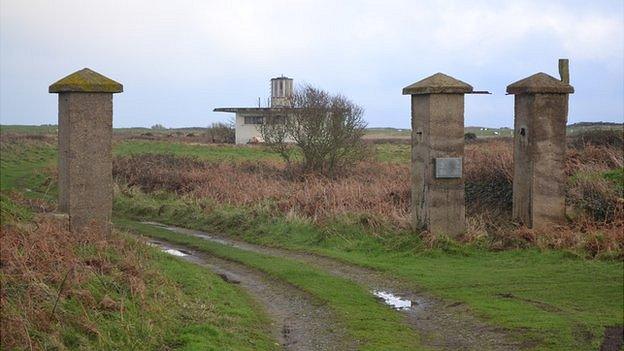
The camp sits next to the airport airfield and a building for navigation, now disused, was built in the grounds
Mr Birmingham said conservation status would give planners control over how the site was managed in the future.
He said the island's land use plan, due to be reviewed next year, could also be adapted to offer further protection to the area.
- Published29 December 2014

- Published24 December 2014

- Published20 October 2014
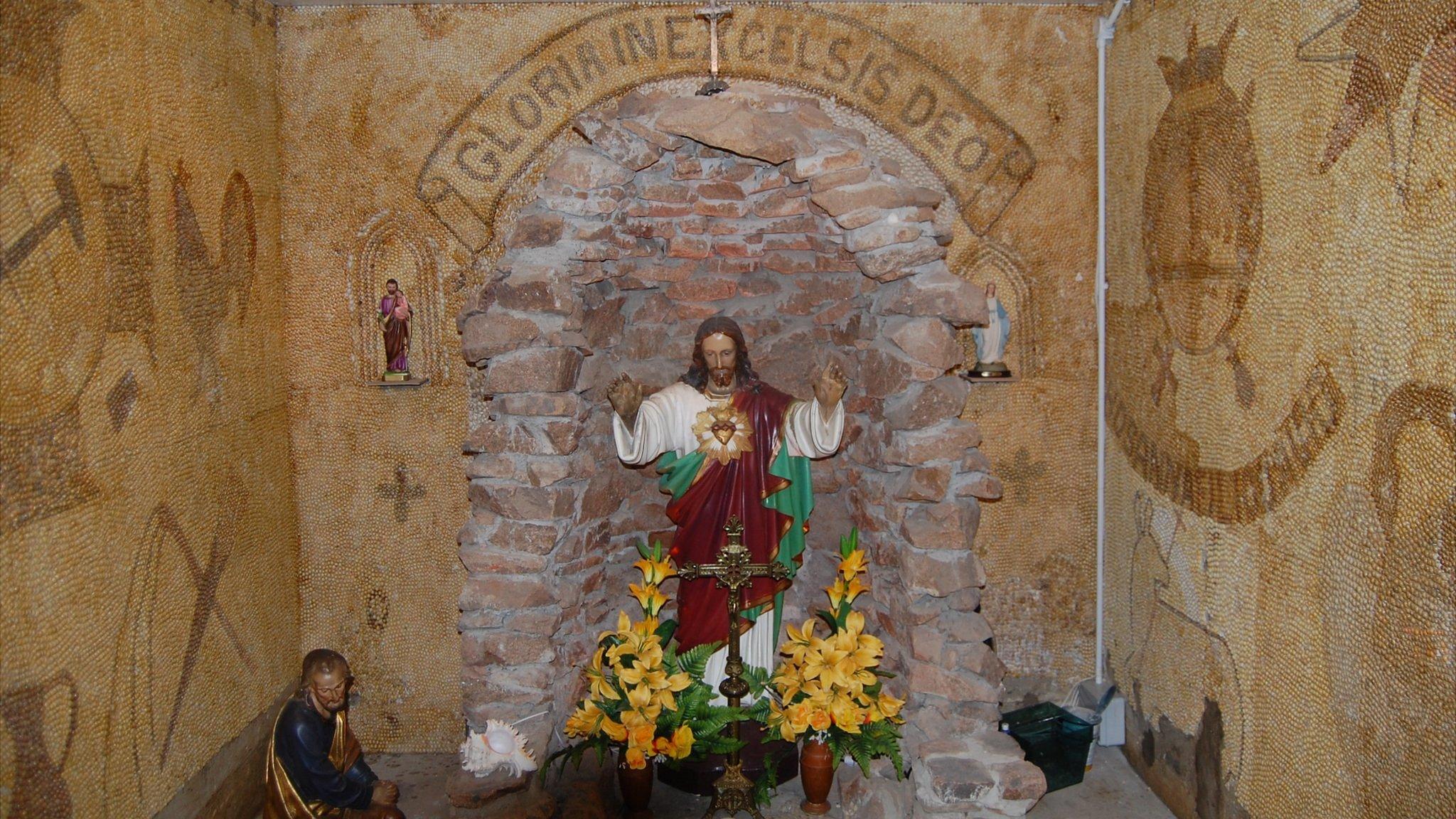
- Published3 October 2014
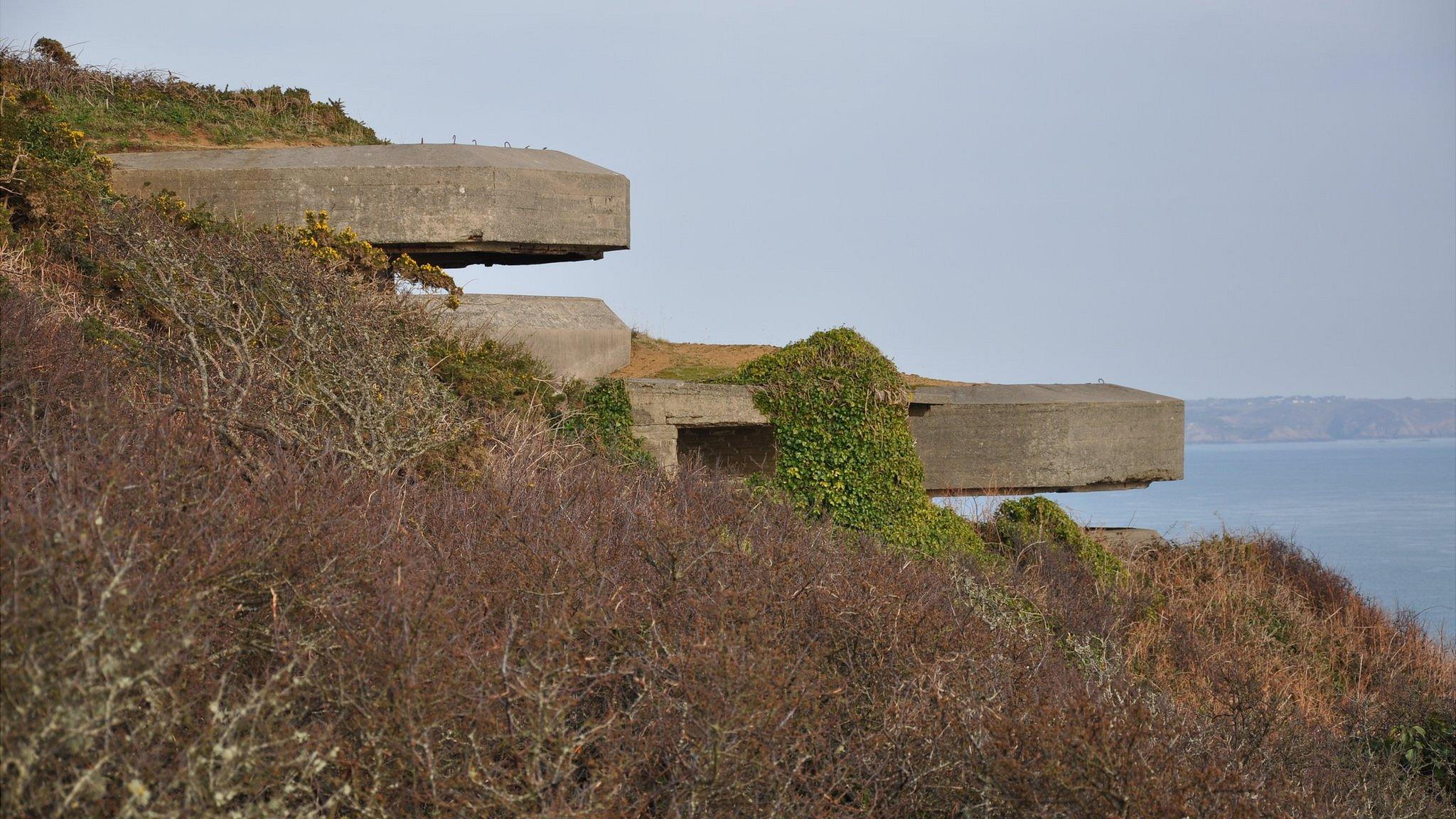
- Published3 October 2014
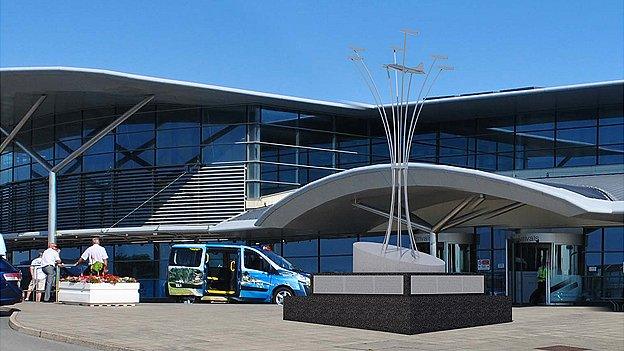
- Published20 August 2013
